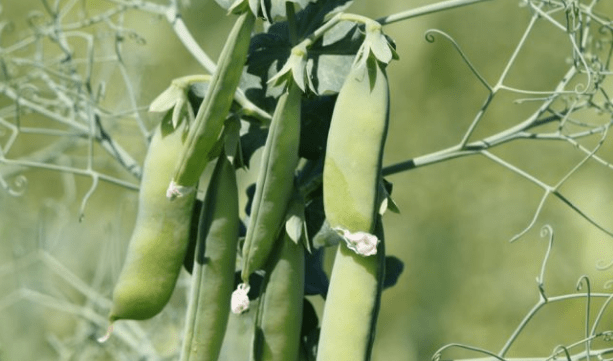For U.S. pulse crop producers, it’s the time of year again where growers are akin to track sprinters on the block, impatiently waiting for the starting pistol to fire. Unfortunately, the race start official is a sadistic and vengeful sort, nicknamed “Mother Nature,” letting a lucky few get their work done (like ND’s Mark Hardy, photo
NORTHERN PLAINS Montana has had “spring-like” temperatures with scattered rain, according to the USDA-NASS report, with a little less than 4 days suitable for field work. They report dry peas, mainly yellows as being roughly 9{43a21437b022293ea22983a65937d7e18883fb2ff2b11e03a1041d36bd400603} planted compared to last year’s 35{43a21437b022293ea22983a65937d7e18883fb2ff2b11e03a1041d36bd400603} and lentils at 1{43a21437b022293ea22983a65937d7e18883fb2ff2b11e03a1041d36bd400603} planted compared to 17{43a21437b022293ea22983a65937d7e18883fb2ff2b11e03a1041d36bd400603} last year. Brian Gion, the Marketing Director for the Northern Pulse Growers Association reports that today about 10-15{43a21437b022293ea22983a65937d7e18883fb2ff2b11e03a1041d36bd400603} of the pulses (mainly yellow peas and lentils) are planted in the eastern Montana and the Williston, ND area. There might be a few acres here and there planted in other areas of North Dakota, says Gion. Soil temps are still cool and the area still has damp conditions. The next 7-day forecast is calling for cool and wet conditions as well. The Fort Benton and Big Sandy, MT area is about 25{43a21437b022293ea22983a65937d7e18883fb2ff2b11e03a1041d36bd400603} planted and further west from there, Gion reports that about 10-15{43a21437b022293ea22983a65937d7e18883fb2ff2b11e03a1041d36bd400603} are planted. Mark Hardy is busy planting green peas at his Hardy Farms operation in Beach, North Dakota. “Conditions are good for planting, but we could use some rain soon,” Mark commented. “We’re fairly cool and dry, but have rain forecasted next
CANADA The March 31st edition of the Pulse Pipeline reported on USDA’s projected pulse crop planting acreage for the U.S., and as growers start planting, Statistics Canada released their estimate for Canadian planting of dry peas, lentils and chickpeas today. The table, provided by the marketing team at the USA Dry Pea & Lentil Council is shown below. According to VP of Marketing, Pete Klaiber the drop reflected in dry peas will most likely be in yellow peas, while green pea acres remain flat. The sharp decline in lentil acreage will come in red lentils, with green lentil acreage flat to a slight decline. Chickpeas also show a decline in acreage, but Canada’s chickpea production will rise year over year if yields return to average levels versus the low yields and abandoned acres of 2016. According to Canadian news, although prices are favorable for chickpea growers,
INDIA According to the first official forecast from the India Meteorological Department (IMD) this week, India’s South-West Monsoon season is expected to be normal this year. This monsoon accounts for 70 percent of the country’s annual precipitation. Given that India is a major buyer of U.S. pulses, and is continually striving to grow more pulses and import
CONCLUSION Clearly, according to the USDA-NASS progress reports for each pulse growing state we’re behind last year’s planting progress at this time. However, compared to the five-year average each state is holding their own. Canadian acreage is down, but if they have even average yields their production numbers will be better than last year. Finally, with monsoons projected to be normal for our biggest pulse importer, India may rely less on foreign imports of pulses. However, Indian traders are on
Picture: USA Dry Pea & Lentil Council


